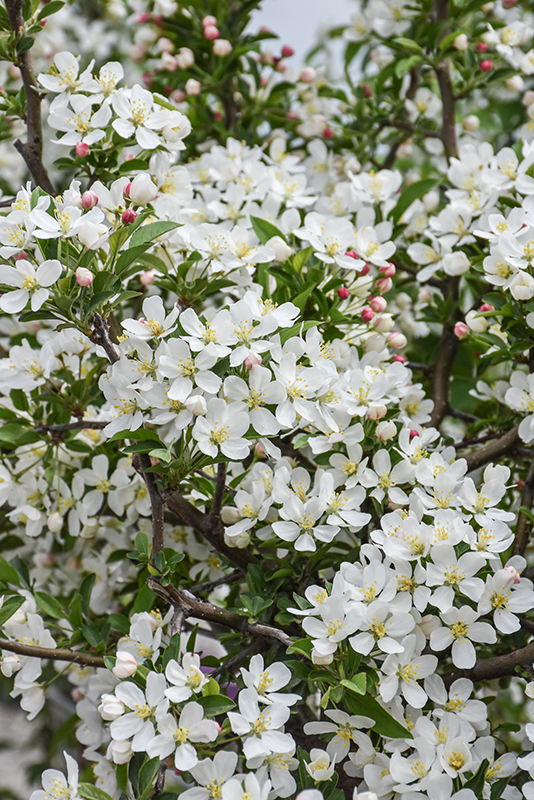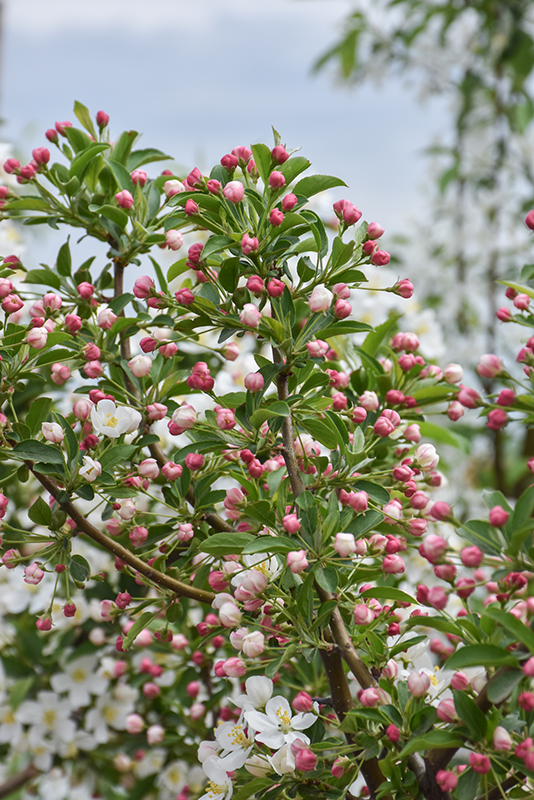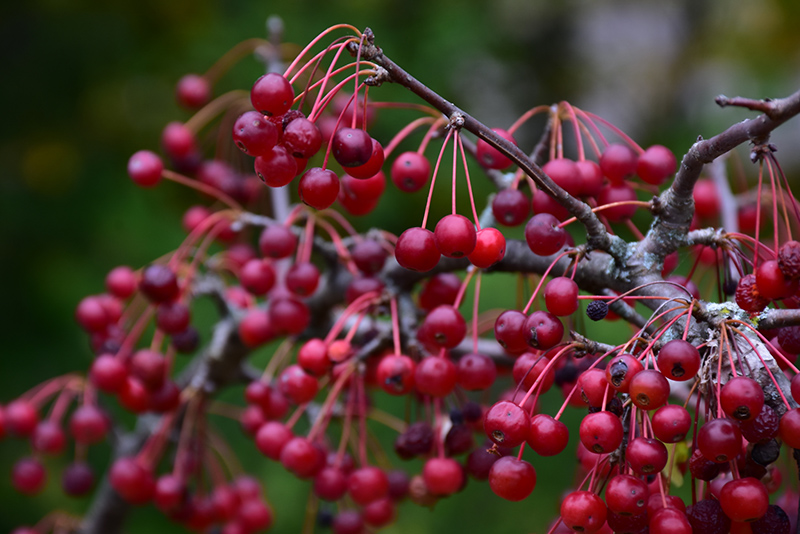>> Home
Firebird® Flowering Crab
Malus sargentii 'Firebird'
Height: 8 feet
Spread: 10 feet
Sunlight:
![]()
Hardiness Zone: 4a
Other Names: Sargent's Flowering Crab, Roseybloom Crabapple
Brand: J. Frank Schmidt & Son Co.
Description:
A distinctive ornamental tree which features fragrant white flowers which open from red buds in spring followed by red fruit in fall, distinctly horizontal branching habit is very attractive; needs well-drained soil and full sun, makes a great accent
Ornamental Features
Firebird® Flowering Crab is covered in stunning clusters of fragrant white flowers along the branches in mid spring, which emerge from distinctive rose flower buds before the leaves. The fruits are showy red pomes carried in abundance from early to mid fall. It has dark green deciduous foliage. The pointy leaves turn yellow in fall. The rough brown bark and brick red branches add an interesting dimension to the landscape.
Landscape Attributes
Firebird® Flowering Crab is a dense spreading deciduous shrub with a stunning habit of growth which features almost oriental horizontally-tiered branches. Its average texture blends into the landscape, but can be balanced by one or two finer or coarser trees or shrubs for an effective composition.
This is a high maintenance shrub that will require regular care and upkeep, and is best pruned in late winter once the threat of extreme cold has passed. Gardeners should be aware of the following characteristic(s) that may warrant special consideration;
- Disease
Firebird® Flowering Crab is recommended for the following landscape applications;
- Accent
- General Garden Use
Planting & Growing
Firebird® Flowering Crab will grow to be about 8 feet tall at maturity, with a spread of 10 feet. It has a low canopy with a typical clearance of 2 feet from the ground, and is suitable for planting under power lines. It grows at a medium rate, and under ideal conditions can be expected to live for 40 years or more.
This shrub should only be grown in full sunlight. It prefers to grow in average to moist conditions, and shouldn't be allowed to dry out. It is not particular as to soil type or pH. It is highly tolerant of urban pollution and will even thrive in inner city environments. This is a selected variety of a species not originally from North America.


